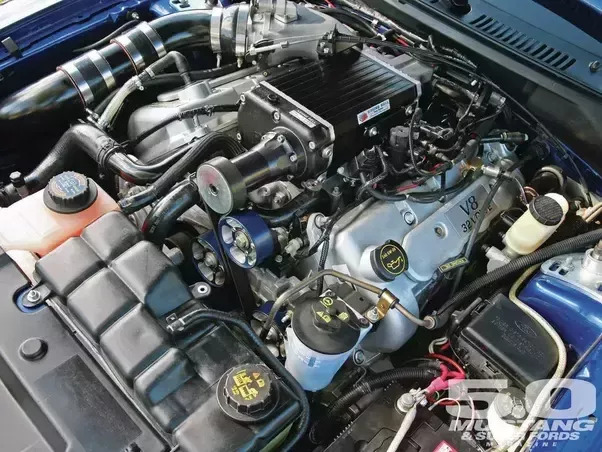In this another edition of the #GoMechanicBasics, we discuss Turbocharger vs Supercharger in detail.
Also Read: Carburetor Vs Fuel Injection | GoMechanic Basics
What is a forced induction system in a car?
A forced induction system overcomes the restrictions of atmospheric pressure by pushing a lot of air into the combustion cylinders. Turbochargers are a kind of forced induction system. They compress the air flowing into the engine; thus, that lot of fuel and air can be burned in the cylinders, and the outcome is a nearly 50% increase in power.
What are the differences between supercharger vs turbocharger in a car?
In easy words, superchargers are pressure increasing devices that supply air at high pressure to the engine. A supercharger is driven by the engine power itself & the power is delivered through a pulley and a belt.
A turbocharger is a form of the supercharger. It’s a gas compressor (exhaust gas specifically) which is used for forced induction on an internal combustion engine (car engines for instance). The use for a turbocharger is to produce more power by raising the density of the air entering the engine.
The turbocharger has the compressor motorized by a turbine that is driven by the engine’s exhaust. This is different from a supercharger that is powered by a mechanical pulley drive. Turbocharging is very familiar with diesel engines for the reason that they are suitable very well for turbocharging. An engine’s precise power and power to weight ratio can be noticeably bumped up by turbocharging.
What are the benefits of a Supercharger?
- The power delivery with a supercharger is quick and instant
- Superchargers provide an increase in power without lag (turbo lag for example).
- Superchargers are easy to install and draw power from the engine.
- Suitable for combustion engines with smaller displacements.
What are the benefits of a Turbocharger?
- A turbocharger uses a turbine & a compressor mounted on the similar shaft.
- A turbocharger doesn’t draw power from the engine thereby, no mechanical drag
- A turbocharger uses the expelled exhaust gas to propel the turbine.
- Turbochargers are best suitable for higher displacement engine.
Which one is superior, turbocharger or supercharger?
Turbocharger vs Supercharger; to each their own, be it a turbocharger or a supercharger. Both these induction systems have a purpose to fulfil. Both these system work in order to squeeze the maximum ounce of power and torque from an internal combustion engine. However, car manufacturers have determined that the turbocharger wins over supercharger by a relative margin, not on power but providing best fuel efficiency.
For both superchargers & turbochargers, a significant part of the design is to keep the air that goes into the engine cool. Air compression increases its temperature; thus, it is general to use an intercooler to decrease the temperature of the air among the pump and engine.
Can you use a turbocharger and a supercharger?

Yes, using a turbocharger in tandem with a supercharger is very much possible. In fact, racing cars have been using twin-charging (turbocharger+supercharger) to increase the power both at the low RPM band and the high RPM band.
However, twin-charging is on possible in petrol-powered cars. Diesel-powered cars have the limitation of producing high torque at low RPM.
How much horsepower does a supercharger add?
With the utilization of superchargers, the horsepower and torque of the engine increase considerably in the range of 70% to 80%. As the supercharger works out the engine RPM, the fuel efficiency also increases. It is a quick and efficient way to increase the performance of a vehicle.
How much horsepower does a turbocharger add?
Installing a turbocharger can yield increased power and torque by 20% to 30%. In some situations, it can even increase the power to upto 50% of the engine’s peak capacity.
What is a turbo lag?
Turbo lag is defined as the time it takes between smashing the accelerator and feeling the rush of torque from a turbocharged engine. Basically, a turbo lag is the time, a turbocharger takes to take in the air, spool and provide the gush of power to the engine. Very common in turbocharged diesel cars (say 1.3 DDis Maruti Suzuki).
Is a supercharger bad for your engine?
A supercharger boosts the performance of the vehicle by generating air pressure in the engine, therefore, burning more fuel and in turn, generating more energy. In addition, a turbine to the supercharger can be transformed into a turbocharger, which delivers better performance outcomes as compared to a supercharger.
Can a supercharger increase fuel mileage?
Superchargers can increase the peak engine power by upto 80%, making them good for racing, pulling heavy loads, or just adding exhilaration to the usual driving experience. A supercharger can eat as much as 20% of an engine’s power output (due to mechanical drag). But just because a supercharger can provide upto 80% increase in power, this is a fair trade-off we think.
Can you turbocharge or supercharge any car engine?
Yes, you can, you can add an aftermarket supercharger system to a car but mind you! it can be insanely expensive and possibly not a wise investment if you are thinking to plonk a supercharger into an economy hatch or a c-segment sedan.
Superchargers come in three major configurations recognized as root, twin screw, and centrifugal. Superchargers are generally standard equipment on numerous types of racing cars where it’s all about the speed, and in some cases are not really going to be street legal.
What are some cars in India with a turbocharger?
Here are some Indian cars that come fitted with a turbocharger:
- Tata Nexon
- Volkswagen Polo GT TSI.
- Maruti Suzuki Baleno
- Tata Bolt
- Tata Zest
- Fiat Linea T-Jet
- Ford EcoSport
- Volkswagen Vento TSI
What are some cars in India with a supercharger?
Superchargers are a rare sight on Indian roads and are only featured on high-end luxury or exotic cars from brands like Mercedes Benz, Jaguar, Range Rover etc.
You May Like Alloy Wheels Vs Steel Wheels | GoMechanic Basics






this was very ideal blog for racing cars
i learn something about superchager and turbochager
Nice well explained article. Thanks.
Thank you
Awesome. Thank you for the explanation. I’m looking to buy a 2005 CLS55 Amg which has a supercharger and this was really helpful.
Hi Saman,
We are very glad that our article helped you. Stay Tuned for more such content!